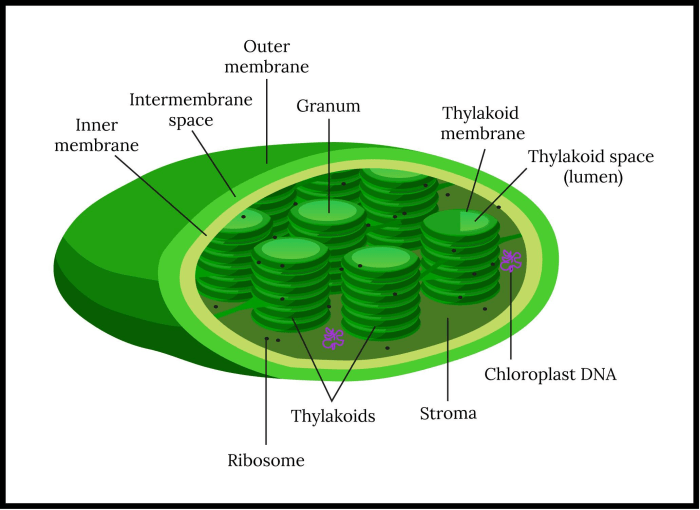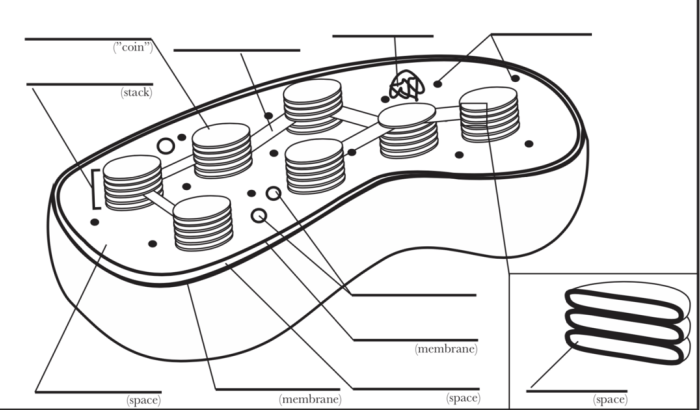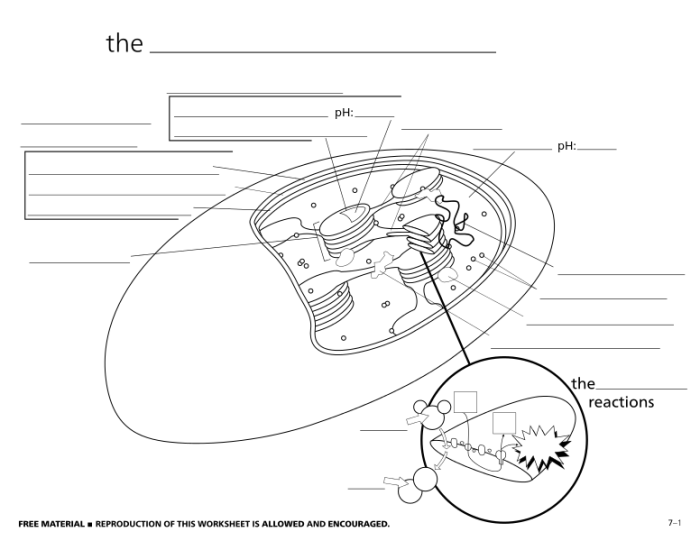The structure of the chloroplast worksheet answers – Embark on a scientific expedition into the intricate world of chloroplasts with our comprehensive worksheet answers. Delve into the fascinating structure and function of these essential organelles, unlocking the secrets of photosynthesis and plant life.
Prepare to unravel the mysteries of the chloroplast’s double membrane, thylakoid system, and stroma, gaining a deeper understanding of their crucial roles in energy production and carbon fixation.
The Chloroplast’s Structure and Function

Chloroplasts are organelles found in plant cells that are responsible for photosynthesis. They have a double membrane structure, with an outer membrane and an inner membrane. The inner membrane is folded into thylakoids, which are flattened sacs that contain chlorophyll and other pigments.
The thylakoids are stacked together to form grana, which are connected by stroma thylakoids.
The thylakoid membrane is the site of the light-dependent reactions of photosynthesis, which convert light energy into chemical energy. The stroma is the site of the Calvin cycle, which uses the chemical energy from the light-dependent reactions to convert carbon dioxide into glucose.
The Thylakoid System
The thylakoid system is a network of flattened sacs called thylakoids. Thylakoids are stacked together to form grana, which are connected by stroma thylakoids. The thylakoid membrane contains chlorophyll and other pigments that absorb light energy.
The light-dependent reactions of photosynthesis take place in the thylakoid membrane. These reactions convert light energy into chemical energy, which is used to produce ATP and NADPH. ATP and NADPH are then used in the Calvin cycle to convert carbon dioxide into glucose.
The Stroma, The structure of the chloroplast worksheet answers
The stroma is the fluid-filled space that surrounds the thylakoids. It contains enzymes that are involved in the Calvin cycle. The Calvin cycle is a series of chemical reactions that use the chemical energy from ATP and NADPH to convert carbon dioxide into glucose.
The stroma also contains ribosomes, which are small organelles that are responsible for protein synthesis. Proteins are essential for the function of chloroplasts.
Regulation of Chloroplast Function
Chloroplast function is regulated by a number of factors, including light intensity, temperature, and the availability of nutrients. Light intensity is the most important factor regulating chloroplast function. Chloroplasts are most active in bright light, and their activity decreases in low light.
Temperature also affects chloroplast function. Chloroplasts are most active at temperatures between 20°C and 30°C. Temperatures above or below this range can decrease chloroplast activity.
The availability of nutrients also affects chloroplast function. Chloroplasts require a number of nutrients, including nitrogen, phosphorus, and potassium. If these nutrients are not available in sufficient quantities, chloroplast function can be decreased.
Commonly Asked Questions: The Structure Of The Chloroplast Worksheet Answers
What is the primary function of chloroplasts?
Chloroplasts are responsible for photosynthesis, the process by which plants convert light energy into chemical energy stored in glucose.
Where do the light-dependent reactions of photosynthesis occur?
The light-dependent reactions take place within the thylakoid membranes of the chloroplast.
What is the role of the stroma in photosynthesis?
The stroma provides the enzymes necessary for the Calvin cycle, the light-independent reactions of photosynthesis.

